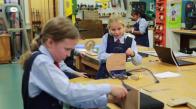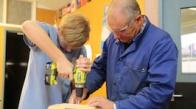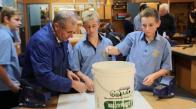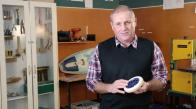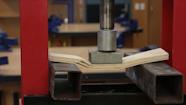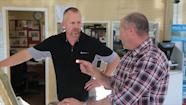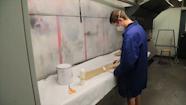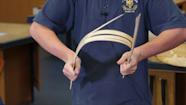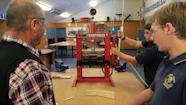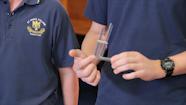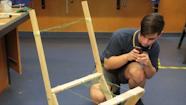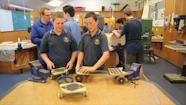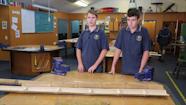Ingredients, equipment, and energy costs are considerations when calculating prices of pies.
Costing in a local environment – Hinterland Express Old Cottage Cakery
Transcript
With the pies, I cost out the meat and as we buy it in, I’d say five kilos of meat at ten dollars fifty a kilo, and then I work out how many pies I will get from that five kilos. Plus the other ingredients that go into it, including the pastry and the power. So, with the pastry which is a set price and I can get, say, twenty family size pies out of a five kg pack of pastry. So I add all the costs together and I divide by the number of pies I make, and then I put on a 100 percent markup, which is what we are expected to put on to actually make a profit.
Sometimes when I’m working out costs I will add in the time that I spend making the pies and I put in, say, at fifteen dollars an hour, but that doesn’t always work out to a profit for me, if I’m absolutely honest. But with some of the meat as in the lamb pies, the cost of the meat is a lot more than say the chicken and the beef. But I charge the same price for every pie so that it averages out overall, some pies I’ll make a bigger profit on than others.
When I’m purchasing new plant, one thing leads to another and with the ovens I started off with one oven, which is the original oven for the cottage, it’s the small Shacklock and it’s, now it’s 40 years old. When I renovated my kitchen down at my main house, I bought a new oven for the main house, so I put my old oven up here, and then my sister in law bought a new oven for her house and offered me her old oven. At that time I needed three very big ovens for the Christmas cakes, because I was making up to thirty Christmas cakes a day and I was also doing corporate baskets which meant that I had to have say thirty or forty cakes exactly the same which meant I had to make them and have everything done together. I decided that I needed to purchase a new oven, and I actually thought at one stage of buying a big proper commercial oven which would have cost me thousands, but again I didn’t think it was economically viable to spend that much money, when it would take me too long to get that money back. So with the money I've made from my pies this, last winter I’ve managed to purchase a new double oven and I think that will last me now for quite some time. So now I have a double oven and the original old single oven and I've managed to sell the other two old ovens, so I replace it when I need it but I buy good quality plant when I do buy. The whole business doesn’t owe me anything, it’s actually all paid for itself over the years.
Related videos
Real food, real fast (02:35)
Students were set a brief to develop a faster, fresher, healthier takeaway based on an analysis of a traditional recipe....
A food bag for a family dinner (03:31)
With a focus on using seasonal produce and their families as stakeholders, students produced great recipes and food bags for a family dinner....
My context and issue (04:57)
Year 13 students share about the contexts and issues they have chosen in their food technology programme.
Engaging contexts in product design (03:09)
Abby Dingle discusses materials and tools that engage students in product design.
Combining knowledge and practice (01:58)
Steve Andrew explains how understanding materials is essential for effective technological practice.
Linking hands-on experiences and understandings (03:54)
Hands-on experiences allow the students to see materials understandings in action.
Play, experiment, explore (02:55)
Steve Andrew lets the students see, feel, and play with products to develop their understandings in materials.
Finding materials to meet the specs (02:36)
Steve Andrew shares how students identify material specifications in a brief and then test materials to find those that are suitable....
School–industry relationship cuts both ways (03:36)
Steve Andrew and Terry Rillstone describe the way the relationship between St John's College and The Shop has benefits for them both....
Pushing the boundaries with materials (02:53)
Steve Andrew describes how his senior students have the confidence to select and work with unfamiliar materials.
Exploring unfamiliar materials (02:44)
Year 12 students from St John's College describe what they know about bamboo and how they are applying this knowledge to their projects....
Students and teachers talk about testing materials in year 11.
Manipulating, forming, and transforming
Students in year 10 describe manipulating, forming, and transforming materials.
Evaluating materials for an outcome
Steve Andrew and students talk about using their knowledge to test materials for their projects at year 12.
Year 10 students describe some of the attributes for the snake skates they are developing.
Senior students select their own issues
Year 12 students talk about the issues that they have selected for their projects.




